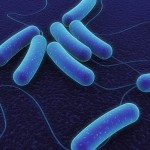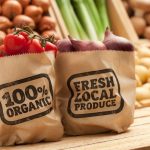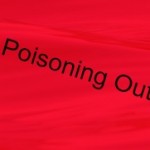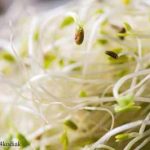Who is most susceptible to food poisoning complications? In many recall notices and all notice of outbreaks, we mention that people who belong to certain groups should be very careful about foods contaminated with pathogens. The FDA calls these groups "at risk." These groups are more susceptible for several reasons. In some, their immune systems may be compromised by age or disease. In others, an illness means their body is less able to fight infections. Of the estimated 48,000,000 food poisoning infections that occur every year in the United States, about 128,000 people are hospitalized and there are 3,000 deaths. People who are in these at risk groups are at greater risk for developing serious complications. Pregnant Women During pregnancy, the mother's immune system is … [Read more...]
Anatomy of an E. coli Outbreak Investigation
With the recent E. coli outbreak linked to romaine lettuce, and the current outbreak of E. coli O103 infections that have sickened dozens in the southern United States, many are wondering how investigators solve these disasters. It's a tribute to public health officials that many outbreaks are solved, and the responsible foods or food safety lapses are identified. Outbreaks that happen at restaurants and gatherings are investigated differently from outbreaks that are linked to specific contaminated foods, such as the Salmonella outbreak in Minnesota linked to unpasteurized cheese, because many more variables are in play. I attended a webinar sponsored by Fight Bac! and the Partnership for Food Safety Education in 2013. Bill Wharton of the Public Health - Dayton & Montgomery … [Read more...]
Dispelling Myths for Summer Food Safety
With the summer months approaching and Memorial Day just around the corner, Ben Chapman, a food safety researcher at North Carolina State University, is uncovering food safety myths for summer food safety. What do you need to know to stay safe food-wise this summer? One suspected culprit that many people suspect in summer food poisoning outbreaks is mayonnaise. But mayonnaise is not usually the issue. That product is made with acids that render the food inhospitable to bacteria. When someone thinks they got sick because of potato or chicken salad, it's not the mayonnaise. It's the potatoes or the chicken. In potato salad, the bacteria that most often make people sick are usually Staphylococcus aureus or Clostridium perfringens. Potatoes are a low-acid food. That means they are … [Read more...]
Organic Foods Not Automatically Safer Than Conventionally Grown
A study published in the Journal of Food Protection has found that while consumers think that organic foods are "safer" than conventionally grown or produced foods, the standards applied to those products do not directly address microbial or chemical safety issues. Researchers looked at the CDC's Foodborne Disease Outbreak Surveillance System in this study. They found that there have been 18 food poisoning outbreaks linked to organic foods from 1992 to 2014. Those outbreaks caused 779 illnesses, 258 hospitalizations and 3 deaths. Moreover, 56% of the outbreaks occurred from 2010 to 2014. Nine of the outbreaks were in a single state, and nine sickened people in more than one state. Salmonella bacteria caused most of the outbreaks, at 44%, and 33% of the outbreaks were caused by E … [Read more...]
10 Largest Multistate Food Poisoning Outbreaks of 2015
The 10 largest multistate food poisoning outbreaks of 2015 sickened 1,771 people, hospitalized 286 people and killed 13. Five of them were Salmonella outbreaks, two were E.coli, two were Listeria and one was Cyclospora. Here is brief look at each of them. An ongoing cucumber Salmonella outbreak that has sickened at least 838 people in 38 states was the largest multistate food poisoning outbreak of 2015. One hundred and sixty five people were hospitalized. Four of them died. About 50 percent of all of case patients were children under 18. The second-largest was a 31-state Cyclospora outbreak that sickened 546 people. Some of the illnesses were linked to fresh cilantro imported from Puebla, Mexico. Other food sources were not identified. The third-largest was a Salmonella outbreak … [Read more...]
Rep DeLauro to FDA: Tell Us What You Need For Food Safety
The FDA’s hour-and-a-half-long budget hearing before a House subcommittee today began with the chairman enumerating the agency’s many challenges including its glacial pace with respect enacting guidance rules and regulations and filing its budget, and ended with Rep. Rosa DeLauro (D-CT) asking FDA Commissioner Dr. Margaret Hamburg for a breakdown of inspection personnel and an answer to the question: what do you require to ensure the public health of this country? To view C-SPAN’s recording of the hearing click here. Hamburg appeared along with the FDA’s CFO James Tyler and Norris Cochran, deputy assistant secretary of the U.S. Department of Health and Human Services before the House Appropriations Subcommittee on Agriculture, Rural Development, FDA and Related Agencies to discuss food … [Read more...]
Raw Flour Can Cause Foodborne Illness Outbreaks
Most savvy cooks know that raw eggs, meat, poultry, fish, and shellfish should be handled with care because they most likely contain pathogenic bacteria. So they wash their hands after handling these products, take care to avoid cross-contamination, and sanitize surfaces after cooking. Cooking those foods to a safe final internal temperature will kill the pathogenic bacteria. But did you know that uncooked flour can also be contaminated with pathogens? A study published in Foodborne Pathogens and Disease found that a cluster of Salmonella cases occurred in New Zealand in October 2008 linked to wheat-based poultry feed raw material. And raw flour caused an E. coli outbreak in the U.S. in 2009 that sickened 77 people in 30 states. In that case, the flour was in raw refrigerated, … [Read more...]
10 Largest Multi-State Food Poisoning Outbreaks Of 2012
The 10 largest multi-state food poisoning outbreaks of 2012 poisoned 1,071 people in 45 states. Various strains of just three pathogens- Salmonella, E.coli and Listeria were the cause of the 10 largest multi-state foodborne illness outbreaks, based on the total number of people sickened. Six of them were caused by Salmonella, three by E.coli and one by Listeria. These dangerous bacteria made their way into unsuspecting consumers through a variety of food sources including meat, cheese, fish, peanut butter, fruit and vegetables. Three of the foods: tuna, cheese and mangoes were imported. Five of the food sources: cantaloupe, ground beef, spinach and spring mix, clover sprouts, and peanut butter, were produced domestically. (The specific food source for two of the outbreaks was not … [Read more...]
Jimmy John’s Putting Sprouts Back on the Menu
According to a post on his Facebook page, the owner of Jimmy John's restaurant chain is putting sprouts back on the menu. He said, "I am rolling out a new sprout. Costs more for me, it's tougher to manage, but we think we hit a homerun on this one." Recalls of contaminated sprouts and food poisoning outbreaks linked to sprouts have become so common that they have been nicknamed "sproutbreaks". There have been nine major sprout recalls in the last 10 months in the United States. Food safety experts say that sprouts are inherently dangerous because the pathogenic bacteria become encapsulated in the seeds as they are formed, which means cleaning the seeds before sprouting them is ineffective. The warm, moist environment in which seeds sprouts is the perfect culture for bacterial … [Read more...]
Under The Sea: Oysters and Norovirus Outbreaks
Area 23, a shellfish harvesting zone off the Louisiana coast roughly equal in size to the city of New Orleans, was closed this week after health officials linked a norovirus outbreak to its oysters. An investigation into the outbreak that sickened 14 people who ate oysters at a Louisiana restaurant determined that the oysters were tainted before they arrived at the restaurant. Health officials issued a recall of the oysters and the temporary closure of Area 23. Closing a harvesting zone the size of a major metropolitan area might seem like an indicator of a massive outbreak, but that’s likely not that case, according to Ken Pastorick, spokesman for the Louisiana Department of Health and Hospitals (LHH). When oysters are harvested, they are put into burlap sacks marked with tags … [Read more...]














